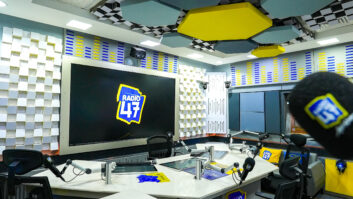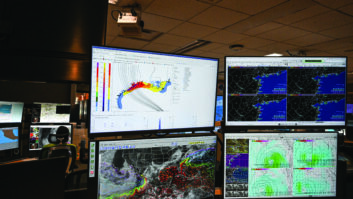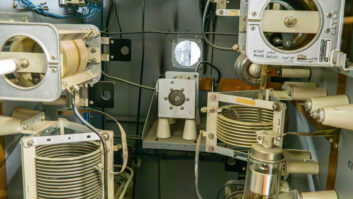PORTLAND, Maine — If you’re like me, over the years you’ve designed and constructed custom solutions for tasks within your facilities where no commercially available product was available or it was outside the budgetary constraints of the time.
Or you may be looking to improve the overall monitoring of all your facilities so as to keep tabs on critical parameters (electronic logging, tower light monitoring, automatic pattern change, device temperatures and so on) while also making use of a legacy remote control to add text, email notification, logging and Web access for control and monitoring.
Alerts
At Saga Communications Portland we have a good deal of experience working with the Broadcast Tools WVRC-8, an eight-channel remote monitoring solution with Web and POTS interfaces that we’ve used at many sites for many years. Primarily we use this product to add email notification of critical parameters to supplement our legacy dial-up remote control systems.

When I discovered the Site Sentinel 16 and researched its potential through emails with Broadcast Tools President Don Winget, I was looking for some programming examples of macros and schedules to get a feel for the interface before we made our first purchases. I was blown away by its capabilities.
With flexible macros, command sequencing, a scheduler, internal event logging, multiple temperature probes, Web, SNMP and an NTP client to keep it on time, as well as the capability to link eight unique email addresses to any status, metering or relays, the possibilities seemed endless.
At our studios where we program and monitor eight stations, we needed a device to interface between our silence- and carrier-detection alarms and our in-house warning light and signaling system. At the same time, we needed email and text messaging capability to replace our current dial-out solution. We had long ago outgrown the existing facilities, originally designed to handle six stations.
A few years ago we replaced the studio-alert portion of the system to facilitate monitoring 12 unique alerts. Then it was time for an updated interface between the monitoring devices, our internal studio signaling system and the external notifier.
We were also looking to reduce miscellaneous erroneous and transient alarms. The Broadcast Tools Site Sentinel 16 pulled all those needs together and proved to be a single-solution perfect fit.
The Site Sentinel 16 allows us to use macros, scheduling, status, metering, relays and alert delays to monitor each station for the absence of PGM audio, loss of left or right channels, an out-of-phase condition, off-air audio loss and carrier loss, as well as other environmental parameters including generator operation, moisture detection and temperature monitoring.
When a particular station has a problem or the studio generator is online, decisions are made by the Site Sentinel 16 to alert the correct personnel depending on several factors: the source of the alert, the time of day and the duration of the alarm.
If, for example, our hot AC WMGX(FM) has a brief outage of PGM audio, the studios are notified immediately. If the outage continues, the PD is notified. For a prolonged outage (more than 60 seconds) overhead strobe lights and an in-house audio message are triggered and the engineer is notified.
It’s a daypart-sensitive tiered system that escalates as the outage drags on, so a brief operator mistake or a quick carrier loss will not cause panic by notifying everyone at once. This also allows us to filter the number of alerts for what is likely an operational or satellite feed timing issues.
Another example: If that WMGX PGM audio and off-air audio are missing for a brief period of time, the studio is alerted and the PD receives a message.If PGM is available and there’s off-air silence or carrier loss, the engineer is contacted first, which quickens a resolution.
The Site Sentinel 16 has also helped us automate the interlocks at our backup tower sites to avoid accidental operation of both the main and backup sites simultaneously for an extended period of time and warm-up backup transmitters when there’s an outage detected at main sites.
Through the use of closures and status indications between sites, the Site Sentinel 16 monitors the main site for proper operation. The Web interface also offers us a second entry point to the backup site in the event that the dial-up access goes down for whatever reason.
The Site Sentinel metering is stable. I generally don’t need to recalibrate the readings over time. Another plus is that the inputs are not sensitive to RF. We proved this recently when we integrated one about 10 feet from an AM/FM stick! The Web interface is responsive and well-formatted. Broadcast Tools recommends the use of Firefox and other browsers (excluding Internet Explorer).
We continue to invest in the Site Sentinel 16. It has proved to be a reliable, effective utility that meets several of our needs for an affordable price.
For information, contact Don Winget at Broadcast Tools in Washington state at (360) 854-9559 or visit www.broadcasttools.com.







